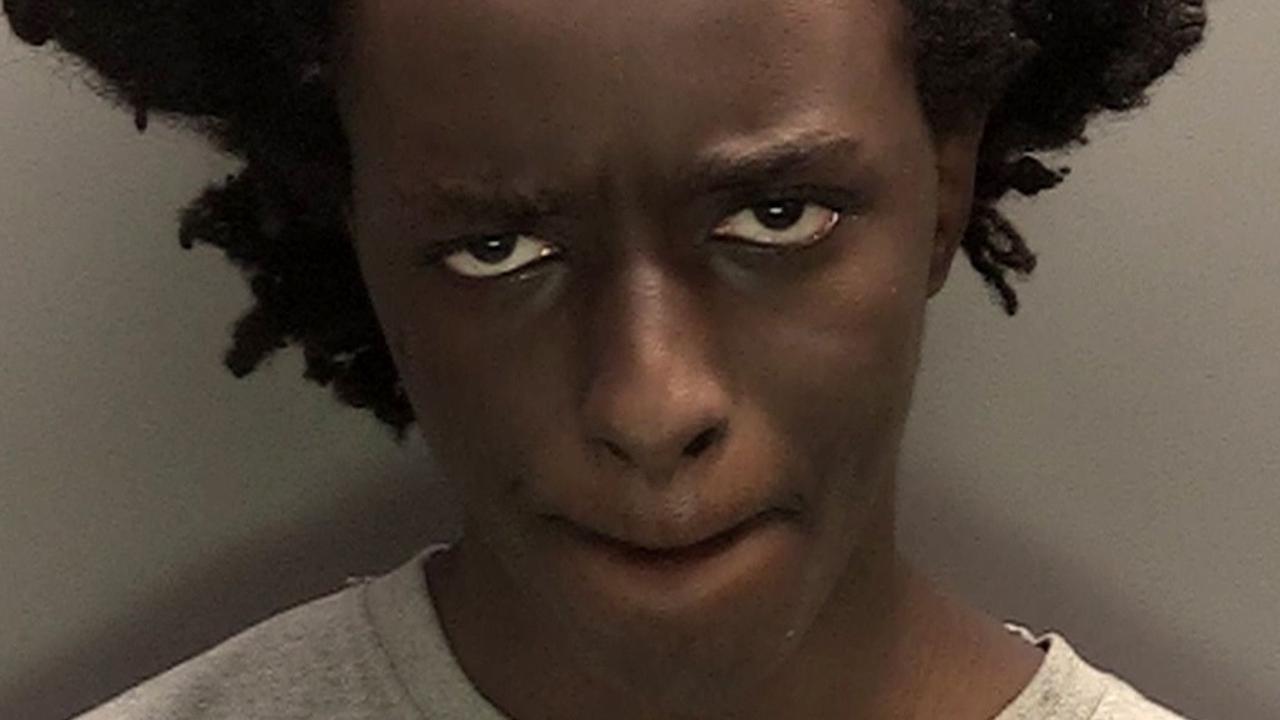How the Bandidos have carved a brutal and bloody history in Australia
BORN from the ashes of their former Comanchero colours, the Bandidos have carved a bloody history of public shootings, tit-for-tat violence and brutal acts of retribution.

Crime in Focus
Don't miss out on the headlines from Crime in Focus. Followed categories will be added to My News.
THE Bandidos were born from the ashes of their former Comanchero colours.
At least that’s how the club tells it, citing a split over leadership in 1983 that saw defecting Comancheros torch their colours — at the same time igniting a violent war that would cost lives on both sides.
Former Comanchero Anthony “Snodgrass” Spencer got the blessing of the US Bandidos motorcycle club to set up Australia’s first chapter in Sydney.
Since then the Bandidos have carved a bloody and brutal history of public shootouts, planned hits, bombings and even a fatal beating sparked by a clubhouse dog named Trouble.
THE STORY BEHIND THE REBELS BIKIES GANG
WHAT YOU NEED TO KNOW ABOUT THE HELLS ANGELS
HOW THE COMANCHEROS BECAME THE MOST VICIOUS BIKE GANG
What do we know about the Bandidos?

Chapters, patches and tattoos
The club has international, national, and local chapters.
There are chapters across the North America, Europe, Asia and South America.
In Australia there are dozens of local chapters, with a presence in all states.
Each has the offices of president, vice president, secretary and sergeant-at-arms.
The US-based international president, El Presidente, oversees international expansion and governs the organisation overall.
Wannabe members are called hangarounds and the chapter President decides when they can become a prospect. To become a patched member, they must be unanimously voted in by other full members.
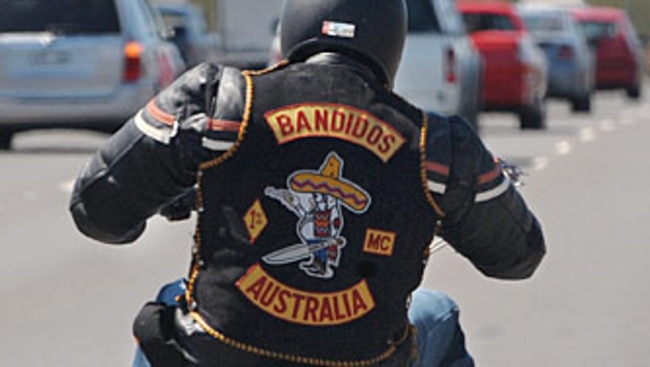
Prospects must wear a patch identifying themselves as prospects.
Full members can sport club tattoos including “backpacks”: full back tattoos of the club’s emblems.
The club expands its reach by sponsoring smaller motorcycle clubs, then recruiting the entire club, also known as “patching over”.
Members wear leather or denim vests known as “cuts” because the sleeves are cut off. The Bandidos logo is a Mexican bandit.
A top rocker patch says Bandidos and a bottom rocker names the chapter location.
Patches include the 1% badge to denote an outlaw club; the number 13 — denoting an “M” — or the 13th letter of the alphabet.
Bikies say it means motorcycle.
The club maintains a website listing all of its chapters, offering merchandise for sale and remembering its slain by nicknames like “Whack”, “Hard Up” and “Fatty”.
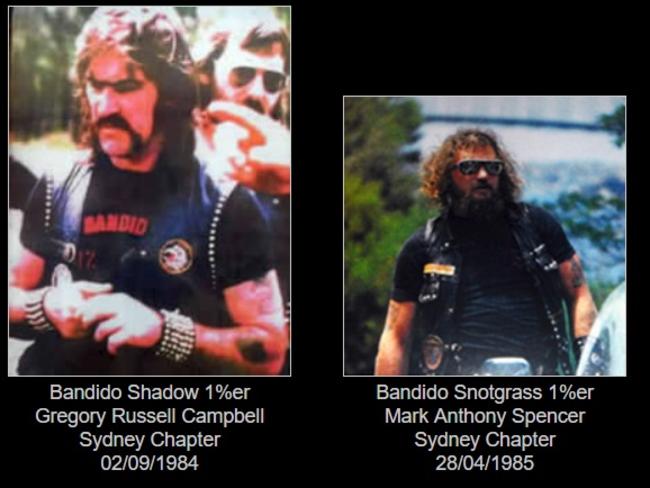
History of the Bandidos in Australia
Milperra Massacre
Across Australia the Bandidos have made headlines for their violent feuds with other bikie gangs — including Australia’s most famous bikie shootout, the Milperra Massacre.
Founding president Anthony “Snodgrass” Spencer — who had met American Bandidos members on a previous trip to the US — sought permission from senior US Bandido Ronnie Hodge to set up an Australian chapter in 1983 in Sydney.


The US Bandidos accepted, believing an Australian branch could help expand their amphetamine operation.
But the Comancheros, led by Jock Ross, did not respond well to defections to the newly formed club, and after months of violence, the gangs went head-to-head on Father’s Day in 1984.
Bikies from both sides met at a motorcycle swap meet in the grounds of Milperra’s Viking Tavern, in Sydney’s southwest, where they opened fire in a crowded area.



The ten-minute shootout claimed the lives of Comancheros Robert “Foggy” Lane, Phillip “Leroy” Jeschke, Ivan “Sparra” Romcek and Tony “Dog” McCoy; and Bandidos Mario “Chopper” Cianter and Gregory “Shadow” Campbell.
But most horrifying was the death of innocent teenager Leanne Walters, 14, who was struck in the face by a stray bullet.
More than 20 people were also injured.
It was the most shocking display of bikie brutality Australia has ever seen and became known as the Milperra massacre.
The resultant legal proceedings cost $11 million, with Perspex cages even built in court to separate the gangs.
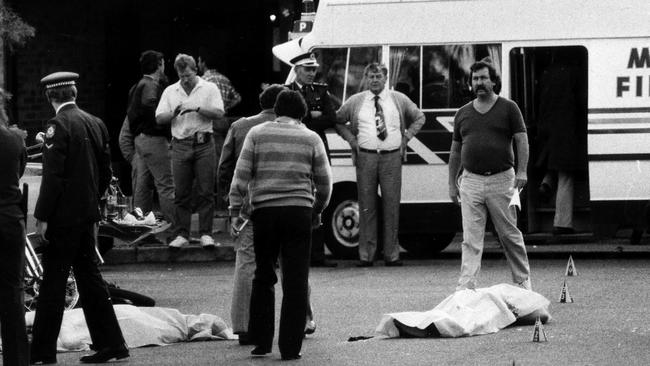

Bandidos leader Spencer took his own life while awaiting trial.
Eventually, 21 bikies — including 16 Bandidos — were found guilty of manslaughter, and nine of murder.
However, the nine murder convictions were quashed on appeal and most involved served only 5 years or less in jail.
Comancheros founder Jock Ross was released from prison in 1992 after serving five years.
Conflicts in the 1990s
Throughout the 1990s, the Bandidos and the Hells Angels feuded violently across Europe, particularly in Scandinavian countries.
More than half a dozen bikies were killed and an estimated 200 people were injured as the bikies fought, with incidents including airport shootouts and an anti-tank missile attack.
The violence continued in Australia too.
In 1996, about 20 machinegun shots were fired at a car after a fight between Bandidos and members of the Viking gang at a Ballarat pub.
One man was shot and a bullet also lodged in the car’s LPG tank, but miraculously did not spark a deadly explosion.
In October 1997, as the Bandidos descended on Geelong for a national meeting, both police and national Bandidos president Michael Kulakowski said the club had mellowed.
But Kulakowski, Bandidos sergeant-at-arms Sasha Milenkovic and senior member Rick Destoop were shot dead barely a month later by Rebels bikies at a Sydney nightclub.


The triple-murder prompted the National Crime Authority to wrap up a two-year investigation into the Bandidos, codenamed Operation Panzer, which was set up after a report tabled in Federal Parliament compared bikie gangs to triads.
In December 1997, raids were conducted on properties in Ballarat, Geelong, Shepparton and Bendigo, as well as in New South Wales, South Australia and Western Australia.
Police seized more than $1 million worth of drugs — including cannabis, LSD, amphetamines and heroin — and weapons such as an AK-47 assault rifle and sawn-off shotguns.
Nineteen people faced charges, including 13 Bandidos in Victoria.
While the police managed to substantially weaken the Bandidos, the club continued expanding in regional Victoria by overtaking smaller rivals.

They had avoided moving into Melbourne after making a deal with the Hells Angels to stay in regional Victoria.
But they still became entangled in several tit-for-tat gang disputes.
Their Geelong clubhouse was bombed in August 1999, and a car was firebombed outside the home of a Bandido member.
This came after a spate of shootings and arson attacks interstate; police believed some Geelong-based Bandidos had been in Adelaide, fighting alongside their local associates.
In October, a bomb was discovered at their headquarters in Ballarat. Several sticks of gelignite were in a shoebox with a timer, but did not explode.
The 2000s: Murders, Rebels, police corruption
A police operation slowed the Bandidos in March 2000, when 12 raids were conducted in the Geelong area.
Police targeted their clubhouse, but also shut down a drug lab in Lara capable of producing $2 million worth of amphetamines a month, and found a cache of explosives at another house.
Five people were arrested in the raids.
The Bandidos were linked to the disappearance of Geelong father-of-four Earl Mooring in October 2000.

An inquest heard claims that an interstate faction of Bandidos travelled to Victoria in pursuit of cash hidden at Mooring’s home.
Former Bandido Steve Utah broke the club’s code of silence and claimed in a TV interview and a book that he helped dispose of Mooring’s body. Mooring had allegedly been tortured with a hammer by other bikies.
Mooring’s body was found in NSW in 2004, but his killers have never been brought to justice and a $500,000 reward remains on offer for information about his death.
Bandidos national secretary Robert Kim Sloan was set free in April 2002 after serving five months of his term for drug trafficking.
Sloan accused police of setting him up, and claimed that former detective Stephen Paton had planted drugs in his kitchen during the Geelong raids in 2000.
After Paton was charged with drug trafficking, Sloan successfully lobbied for his sentence to be quashed and the charges dropped.
FOOTY STAR, STRIPPERS AND THE BIKIE


Paton later plead guilty and received a minimum three-year term behind bars.
Sloan went on to lodge a lawsuit against three officers, then-Chief Commissioner Christine Nixon and the state of Victoria, while his children and partner also launched civil actions against police.
They received nearly $400,000 in a 2006 out-of-court settlement.
In 2007, the Rebels reportedly declared war on the Bandidos in Victoria.
The Bandidos’ Geelong clubhouse was sprayed with bullets and torched, as was their new premises in Sunshine North.
A number of other violent tit-for-tat attacks followed; tensions eased for a while, before Bandidos enforcer Ross Brand was gunned down outside their Geelong clubhouse in October 2008.
He was killed in a drive-by shooting, hours after a fight between Rebels and Bandidos associates at the Geelong Cup race meeting.
The Rebels denied involvement but a member of an affiliate club, Death Before Dishonour, was later convicted over the shooting.

Toby Mitchell gunned down — twice
The Bandidos hit the headlines again late in 2011, when national sergeant-at-arms Toby Mitchell was shot in a botched hit.
Mitchell was gunned down outside Doherty’s Gym, near the club’s Brunswick headquarters, and collapsed in a busy shopping centre car park full of shoppers, parents and children.
It was revealed that his predecessor, Lee Undy, had also been the target of a planned hit but was jailed on firearms offences, leaving Mitchell to take over as the gang’s chief enforcer.
Days before the shooting, the Australian Federal Police escorted Mitchell from Melbourne Airport due to concerns about his safety.
ICE QUEEN’S REIGN OF DESTRUCTION


His girlfriend at the time Danielle McGuire — drug kingpin Tony Mokbel’s former de facto wife — kept a bedside vigil as Mitchell was treated in hospital, having lost a kidney and part of his liver. he spent months recovering.
The police have never charged anyone over the shooting.
But less than two years later, in March 2013, Mitchell survived a second attempt on his life when he was ambushed at another bikie clubhouse in Melton.
The clubhouse belonged to the Diablos, who were linked to the Bandidos, and was just 200m from another bikie club belonging to the Satans Soldiers — a Hells Angels affiliate.
The day of the Mitchell shooting there was a ‘run through’ at the Diablos clubhouse, and in response Bandidos flocked there only to be shot at by Hells Angels, police would later reveal in court. Police said up to 30 shots were fired.
They questioned but released a man after executing warrants on addresses including the Seaford Hells Angels Nomads clubhouse.
Mitchell quit the Bandidos but hasn’t managed to stay out of trouble.
In 2016 he and former Richmond AFL player Jake King took over South Melbourne tattoo parlour City of Ink.
Clubhouse horror
On May 24, 2014, Dandenong glazier Michael Strike wandered past the Bandidos Brunswick clubhouse and upset a pit bull named Trouble which had been tethered near the door.
The dog belonged to patched member John Walker, who saw Strike and asked what he was doing.
Walked pulled him inside the clubhouse and another Bandido, Luke Maybus, latched the door shut.


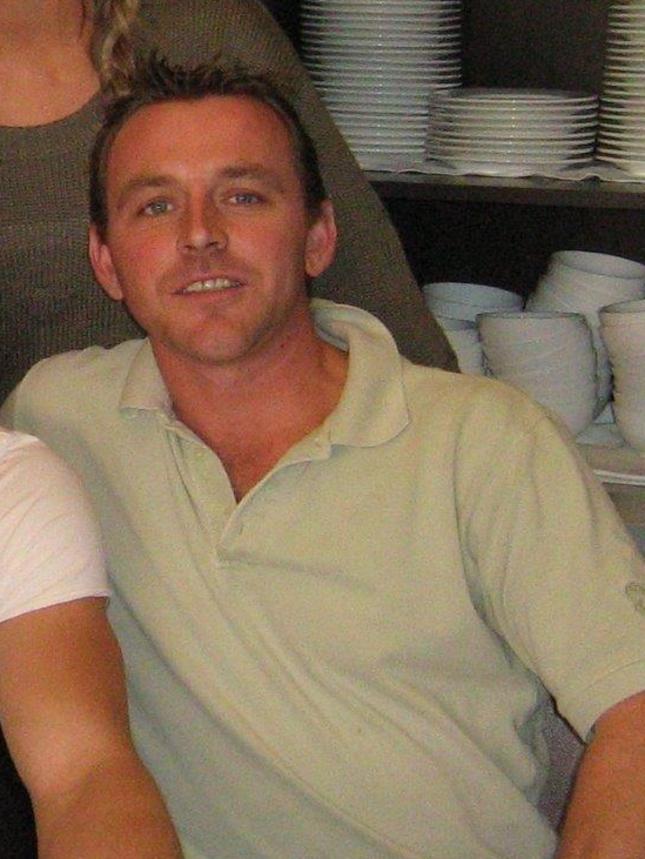
The next day, Mr Strike’s body was found near Keilor Cemetery. What had transpired inside the clubhouse would remain unknown for many months, when a member who left the club to join the Finks described what happened and agreed to give evidence.
A drunk and incoherent Mr Strike had mumbled something about a bombing at the Dandenong Bandidos chapter and named a former member he knew.
Maybus, a former bodybuilder and boxer, then punched him repeatedly.
Someone picked up a metal bar and joined in the attack.
Someone else rammed his head into the club’s metal stripper pole. The brutal beating left the clubhouse interior including couches spattered with the 38-year-old’s blood.
Maybus used a van to dump Mr Strike’s body, not even knowing whether he had survived the beating.
The clubhouse was cleaned, the van used was torched and Maybus was awarded ‘bad company” and “Expect no mercy” patches by the club president for the killing.
Maybus pleaded guilty to manslaughter instead of murder, and was jailed for at least eight years.
RELATED CONTENT:
THE WHO’S WHO OF THE BANDIDOS BIKES GANG


